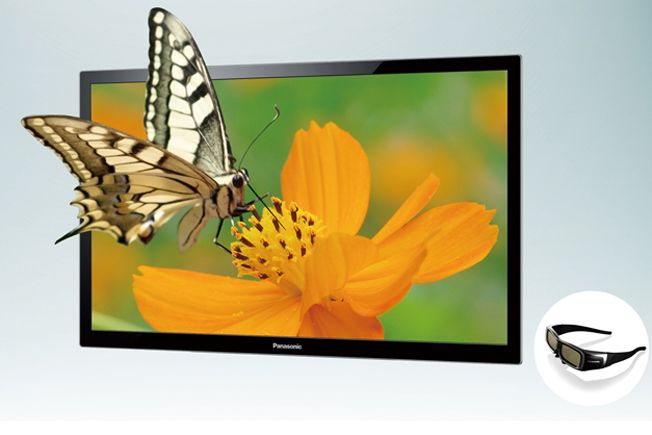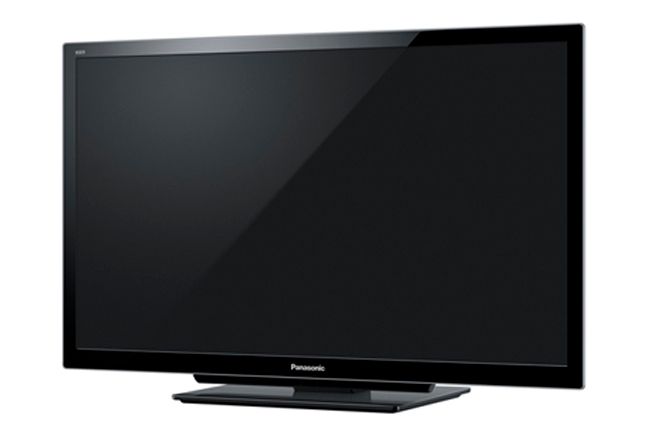During 2010 Panasonic quickly made a name for itself - and plasma technology in general - with a string of high-end 3DTVs that supplied stunning depth and comfortable viewing. That’s not what happened on the LCD/LED side of the market, where quality issues and the dreaded “crosstalk” picture nasty reared its head on numerous occasions, but it’s to the super-flat technology that Panasonic has nevertheless turned to for its DT30 Series.
Our quick take
Panasonic’s first toe in the 3D LED water brings a torrent of quality; sublime and clean 3D in the dark is married to all-round picture goodness in 2D. Our only worry is its lack of Wi-Fi and the fact that it’s harder to get fully immersed in a 37-inch 3D image. Not matter because a new user interface and a refreshed online hub kitted-out with BBC iPlayer and Skype video calling help make this an Edge LED set not to miss.

Panasonic TX-L37DT30 - 4.5 / 5
| FOR | AGAINST |
|---|---|
|
|
A 37-incher with a superb understated design that makes the ultra-glossy competitors look nothing short of tacky, the TX-L37DT30 is an active shutter 3DTV built around a panel bookended top and bottom by LEDs. And it’s a mere 72mm in depth.
Active 3D...
Last year, Active 3D was virtually all there was, but with “passive” sets from LG and, soon, Toshiba and Philips, hiding behind monikers like “Cinema 3D” or “Natural 3D”, it’s wise to know what you're buying. Put simply, the TX-L37DT30 provides the highest quality 3D pictures from 3D Blu-ray discs only (that is, it sends a Full HD image to each eye), but also happily shows Sky’s side-by-side format 3D channel. The passive 3DTVs now coming out can show Sky 3D - which broadcasts a half-HD image to each eye - as well, but when they do they’re operating at maximum resolution; a 3D Blu-ray disc is kinda downscaled.
All this tech talk is just theoretical - what matters is how good the 3D effect is - and Panasonic is here firmly behind its own 3D Full HD system.
It’s almost faultless. Put to work on a 3D Blu-ray disc we got depth, we got nuanced colour and above all no sign of any crosstalk. The detail is also incredible, while the contrast is decent; blacks can occasionally look a little forced, but they’re rarely far from spot on.
Crucially, that was all in a blackout situation. Although Panasonic’s 3D glasses are more comfortable than in 2010, they still need work because watched in daylight the 3D effect can crack around the edges. As well as reflections from light sources such as windows, we noticed a nasty flicker in the corner of the glasses that just refused to go away while the curtains were open. This peripheral problem is anything but, and threatens to undermine 3D altogether since most people watch TV in a well-lit room.
2D fares just as well, and then some. Again, it’s the detail in not just the still, but the fast-moving, image, which impressed us most. That was with 400Hz mode induced on its medium setting, which appears to cure the panel of blurs, echoes and judders. It’s not all top marks - the viewing angle isn't quite as wide as we’d expected and a trailer of Water for Elephants from Viera Connect’s Screenrush app was plagued with colour banding, though otherwise relatively clean.
...with added extras
That Viera Connect online hub is this TV’s other highlight, with the BBC iPlayer app that alone makes it a standout service and the likes of Facebook, Twitter, YouTube, Picasa, Dailymotion, Euronews, Shoutcast and Bloomberg helping out.
It’s even possible to make Skype video calls if you're prepared to shell-out £130 on a TY-CC110 HD Communication camera from Panasonic. Though pricey, the user interface for Skype is quite something - it’s almost identical to the PC/Mac/smartphone-based Skype software - and offers a short lesson to the designers of TV user interfaces. Call quality is excellent, by the way, though we’re not sure exactly how “in demand” this increasingly common feature actually is.
Skype, DLNA streaming and Viera Connect both rely on the TX-L37DT30’s Ethernet LAN port. Built-in Wi-Fi should be present at this price, but if your TV sits far from a broadband router then there are options; Panasonic sells its DY-WL10 wireless LAN adaptor, a surprisingly chunky gadget that must dock with one of this TV’s three USB ports, from around £80.
With its three USB ports able to play a plethora of digital files including DivX and DivX HD, which is also streamed over a network from a PC, this 37-incher is about as media-savvy as it gets.
To recap
Panasonic’s first toe in the 3D LED water brings a torrent of quality; sublime and clean 3D in the dark is married to all-round picture goodness in 2D. Our only worry is its lack of Wi-Fi and the fact that it’s harder to get fully immersed in a 37-inch 3D image. No matter because a new user interface and a refreshed online hub kitted-out with BBC iPlayer and Skype video calling help make this an Edge LED set not to miss

